 Photo credit IStock Photo.
Photo credit IStock Photo.
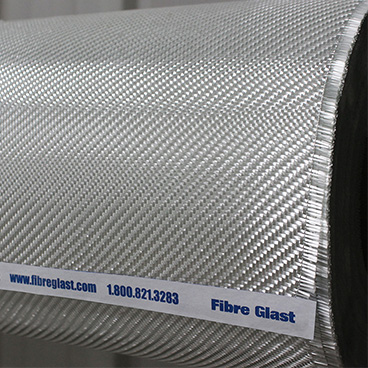 The exciting thing about composites is that an ordinary person can make things that they have never been able to make before, such as bathtubs, a boat, or a motorcycle! Race car bodies, canoes, airplanes, model aircraft, jet skis, boats, sculptures as well as traditional industrial molding and model making have taken on a new dimension as fiberglass becomes less of a mystery, easier to use, and easier to buy!
The exciting thing about composites is that an ordinary person can make things that they have never been able to make before, such as bathtubs, a boat, or a motorcycle! Race car bodies, canoes, airplanes, model aircraft, jet skis, boats, sculptures as well as traditional industrial molding and model making have taken on a new dimension as fiberglass becomes less of a mystery, easier to use, and easier to buy!
The materials that are used are easiest to understand when you think about something like a boat. A boat is hard, it doesn't bend, and it certainly doesn't take in water. Most people think of a boat as being made of "fiberglass".
Fiberglass is actually a textile. It comes on a bolt like a big, white bed sheet. The stuff that makes it hard (like a boat) is the resin. Resin is a liquid and is applied as a coating to the fiberglass. Unlike most household coatings, the resin requires a hardener. The hardener is also a liquid which, when added to the resin, causes a reaction which allows the resin to cure. When the resin (plastic) hardens in and on the fiberglass (reinforcement), you have a reinforced plastic (like a boat). Fiberglass is only one type of reinforcement used in composite work.
When the resin and fiberglass harden, they bond mechanically and chemically, forming a composite material. For most purposes, the terms "reinforced plastics", "composites", and "fiberglass" can be used interchangeably.
It takes several layers of fiberglass and resin to make a structure like a boat. The process can get more complicated as one tries to reduce the weight of your structure and take advantage of the natural properties of composites. But the techniques and refinements are not all that tricky. Keep reading and enjoy! It's not as hard as you think!
Sometimes it is easiest to learn by watching. You might consider some of our videos available on this website.
Reinforcements
The first step in choosing materials is to select a reinforcement. Glass fabrics, Kevlar®, and graphite (carbon) range significantly in both strength and cost. (Kevlar® is a registered trademark of the E.I. DuPont deNemours Company.)
E-glass: E-glass ranges in cost dramatically. Low cost Chopped Strand Mats are ideal for rapid buildup whereas Woven Fabrics can be used for surfacing or weight critical applications.
Aerospace Fabrics: The natural properties of fiberglass make it the ideal reinforcement for many applications where weight is critical. These are superior weaves and types which offer a natural balance between tensile, flexural, and compressive strengths.
Kevlar® and Aramid Fabrics: Synthetic aramid fibers offer extraordinary impact resistance, which makes them ideal for canoes and high-performance boats.
 Photo credit IStock Photo.
Photo credit IStock Photo. The second step in choosing materials is to choose either epoxy, vinyl ester, or polyester resin. You may also want to consider a surface or gel coat.
Epoxies: Epoxies offer high strength, high adhesion and impact resistance. They are temperamental and require temperatures around 75 degrees.
Polyesters: Polyester resins are naturally resistant to ultraviolet light and are used more widely than any other type of resin. They are less troublesome than epoxies, but also require careful mixing and ambient temperatures.
Vinyl Esters: Vinyl Ester Resins are typically used in applications requiring corrosion resistance including building and repairing chemical storage tanks. Vinyl Esters are often described as a cross between polyester and epoxy as it falls between them in both price and handling characteristics.
Gel Coats: Gel coats are special polyester resins which are generally used on both part and mold surfaces. Gel coats are best used in a mold and are not recommended for surface repairs where paint would be suitable. Similar epoxy materials are generally called Surface Coats.
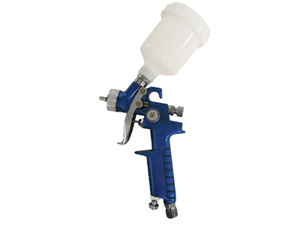 Fiberglass work is very labor intensive! You want to make the job as easy as possible by making sure you have plenty of mixing containers, measuring tools, applicators, safety equipment, and accessories!
Fiberglass work is very labor intensive! You want to make the job as easy as possible by making sure you have plenty of mixing containers, measuring tools, applicators, safety equipment, and accessories!
Applicators: Applying the resin to a surface is best accomplished with mohair rollers or a brush. Working the resin into the reinforcement requires saturation rollers or squeegees. Spraying is usually recommended for gel coats and large jobs.
Mixing and Measuring: It is important to measure the correct amounts of resin and hardener. Tacky surfaces are a common problem when the resin and hardener are not measured or mixed correctly.
Accessories: Proper safety and hygiene equipment, thickness, and temperature measurement are all considerations. Advanced techniques, such as vacuum bagging, require additional equipment and supplies. We carry a full line of useful books and videos which will help you choose the accessories you will need for your project.
Applications
Aircraft: Military, homebuilt, experimental, and commercial aircraft have used composite materials for years.
Art: Stage sets, amusement parks, museums, and zoos find fiberglass easy to use and able to withstand outdoor environments when necessary.
Automotive: Beyond simple repair, car and motorcycle racing have used composites extensively. Buses, trucks, and bicycles have found increasing use for composites.
Industrial: The unique corrosion resistance, strength-to-weight, electrical conductivity, and formability of composites lend themselves to an increasing variety of industrial applications.
Marine: Boats, jet skis, paddles, canoes, kayaks, and buoys are a wide variety of examples where the ability to withstand prolonged exposure to water, salt, gasoline, chlorine, and ultraviolet light is critical.
Radio Control: Radio controlled aircraft, boats, and cars use composites extensively to obtain the critical reduction of weight.
Techniques
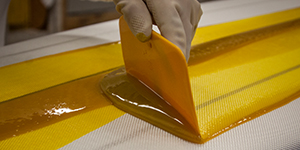 Photo credit IStock Photo.
Photo credit IStock Photo. Laminating: The advantages of applying a protective fiberglass layer over another substrate such as wood are primarily waterproofing and extension of life. Thin layers of resin are sometimes difficult to cure and special attention is required to make laminations turn out as expected. Careful application can result in a surface where substrate is completely opaqued or beautifully highlighted.
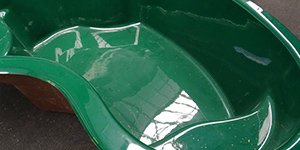 Photo credit IStock Photo.
Photo credit IStock Photo. Molding: The most common fiberglass technique is molding, which allows making several identical parts. The most critical step is in construction of a flawless plug which will result in a flawless mold. Construction of a mold is quite time-consuming, but a good mold will result in numerous perfect parts. Most fiberglass materials are developed to be molded, and exposure to air can actually damage and inhibit the performance if they are not molded!
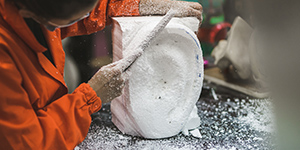 Photo credit IStock Photo.
Photo credit IStock Photo. Sculpting: By sanding a block of
polyurethane foam to any shape, a colored, smooth, and durable form can be created by laminating the foam with fiberglass. Often, the fiberglassed form is painted for detail. Additionally, casting of clear polyester resin enables a long life clear casting, which is difficult to obtain with other materials.
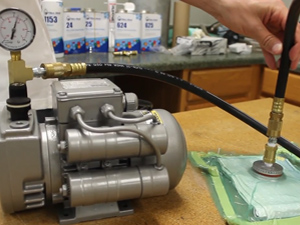 Vacuum Bagging: By adding pressure to a laminate, excess resin can be eliminated which will reduce overall weight and optimize strength. To add pressure without crushing the part, vacuum bagging is used. By placing the part in a bag, a sealed area is created into which vacuum can be run. The resulting vacuum pressure squeezes out excess resin. A vacuum pump is required and the process is usually conducted while the part is in a mold.
Vacuum Bagging: By adding pressure to a laminate, excess resin can be eliminated which will reduce overall weight and optimize strength. To add pressure without crushing the part, vacuum bagging is used. By placing the part in a bag, a sealed area is created into which vacuum can be run. The resulting vacuum pressure squeezes out excess resin. A vacuum pump is required and the process is usually conducted while the part is in a mold.
